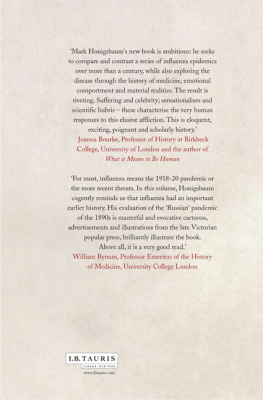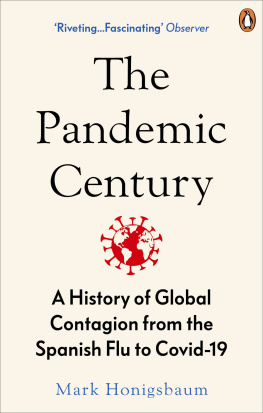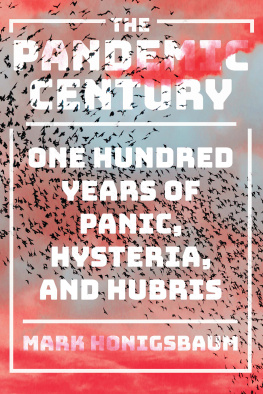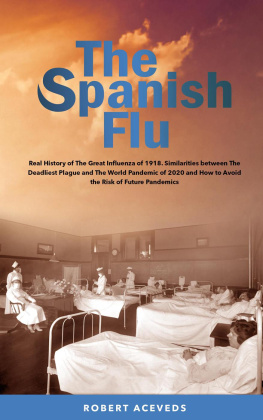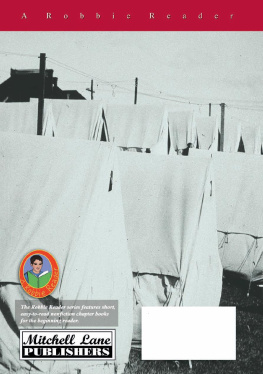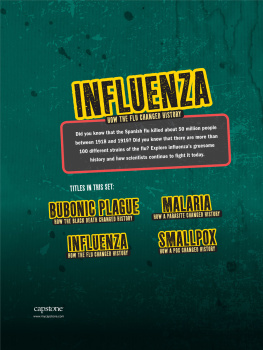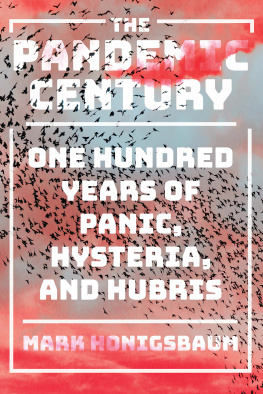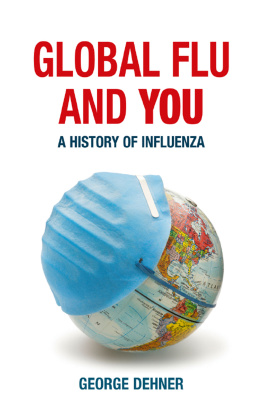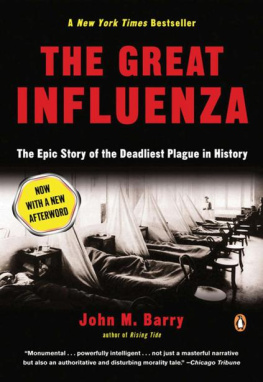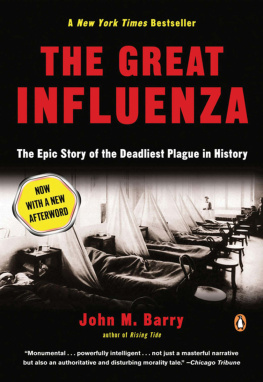
Mark Honigsbaum is Lecturer in the History of Medicine at the University of Zurich, and gained his DPhil at Queen Mary University. He is the author of The Fever Trail: In Search of the Cure for Malaria (2001). His second book Living With Enza: The Forgotten Story of Britain and the Great Flu Pandemic of 1918 (2009) was nominated as science book of the year by the Royal Society.
Published in 2014 by I.B.Tauris & Co Ltd
6 Salem Road, London W2 4BU
175 Fifth Avenue, New York NY 10010
www.ibtauris.com
Distributed in the United States and Canada
Exclusively by Palgrave Macmillan
175 Fifth Avenue, New York NY 10010
Copyright 2014 Mark Honigsbaum
The right of Mark Honigsbaum to be identified as the author of this work has been asserted by the author in accordance with the Copyright, Designs and Patent Act 1988.
All rights reserved. Except for brief quotations in a review, this book, or any part thereof, may not be reproduced, stored in or introduced into a retrieval system, or transmitted, in any form or by any means, electronic, mechanical, photocopying, recording or otherwise, without the prior written permission of the publisher.
International Library of Cultural Studies 30
ISBN: 978 1 78076 478 8
eISBN: 978 0 85773 446 4
A full CIP record for this book is available from the British Library
A full CIP record for this book is available from the Library of Congress
Library of Congress catalog card: available
Typeset in Garamond Three by OKS Prepress Services, Chennai, India
For N AOMI and F RANK
Influenza is the very Proteus of diseases, a malady which assumes so many different forms that it seems to be not one, but all diseases epitome
Sir Morell Mackenzie, Fortnightly Review, 1891.
CONTENTS
LIST OF ILLUSTRATIONS
Chapter 2
Chapter 3
Chapter 4
Chapter 5
ABBREVIATIONS
American Expeditionary Force (AEF)
British Medical Journal (BMJ)
Case fatality rate (CFR)
Centers for Disease Control (CDC)
Central nervous system (CNS)
Chief Medical Officer (CMO)
General paralysis of the insane (GPI)
General Registry Office (GRO)
Global Outbreak Alert and Response Network (GOARN)
Global Public Health Intelligence Network (GPHIN)
Ladies National Association (LNA)
Local Government Board (LGB)
Medical Officer of Health (MOH)
Medical Officers of Health (MOsH)
Medical Research Committee (MRC)
Royal Society of Medicine (RSM)
World Health Organization (WHO)
INTRODUCTION
THE SPHINX OF EPIDEMIC
DISEASES
Flu is not a word calculated to strike terror into the human heart. Flu is too familiar for that, too ordinary. Most of us will have suffered a bout of influenza at one time or another and most of us will have survived to tell the tale, but precisely because flu is so commonplace it is not a tale that many of us would care to relate. As Virginia Woolf observed in 1925 while recovering from one of her recurrent bouts of flu-like illnesses, such a narrative would be exceedingly dull:
The public would say that a novel devoted to influenza lacked plot; they would complain that there was no love in it English, which can express the thoughts of Hamlet and the tragedy of Lear, has no words for the shiver and the headache.
No doubt Susan Sontag would have concurred. The diseases we regard as metaphorical, she argues, are those that tend to scar the body or for which treatment is ineffectual. First, the subjects of deepest dread (corruption, decay, anomie, weakness) are identified with the disease, she writes. Then, in the name of the disease (that is, using it as a metaphor), that horror is imposed on other things.
This book argues that the reason influenza tends to perplex historians and cultural commentators is that it is a protean infection that is forever changing its medical identity. The most common symptoms of influenza are a dry cough accompanied by chills, a severe headache, fatigue, coryza (acute rhinitis) and muscular pain, especially in the back and legs. Yet while the symptoms of seasonal flus tend to be banal, pandemic strains can be terrifying, triggering fatal pneumonias and a condition known as heliotrope cyanosis in which sufferers faces turn a disturbing purple-black colour as their lungs fill with choking fluids. Pandemic forms of flu can also cause diarrhoea, nausea and vomiting, and because the chills frequently alternate with fevers and sweats, in the tropics the symptoms are sometimes confused with dengue fever and malaria. Moreover, even mild attacks of flu have the ability to provoke disturbing nervous symptoms, ranging from fatigue to depression and psychosis.
This diverse symptomatology gives influenza considerable metaphorical flexibility. As the leading Victorian throat expert Sir Morell Mackenzie remarked in 1891: Influenza is the very Proteus of diseases, a malady which assumes so many different forms that it seems to be not one, but all diseases epitome.
Since the early 1970s, there has been a steady growth in interest in the 191819 pandemic. Nor, for the most part, have medical historians shown much interest in the flu epidemics of the 1830s and 1840s.
This book seeks to redress that balance by combining insights from the medical history of infectious diseases, the recent historiography of the emotions, and the sociology of material culture. Drawing on official medical investigations and reports, contemporary newspaper accounts, and the writings of prominent doctors and celebrity patients, I will argue that the modern notion of influenza is a product of new scientific understandings of the disease that first emerged in the 1890s. By the mid-1890s these medical discourses increasingly focused on the respiratory, and nervous complications of influenzadiscourses that, I will argue, were amplified by new telegraphic technologies and the competition between mass market Victorian newspapers, making the Russian flu a sensational topic and a barometer of wider fin-de-sicle social and cultural anxieties. These anxieties were partly a product of the aforesaid telegraphic technologies and partly of medical statistics, bacteriology and then theories of emotional pathology. They can best be understood by an examination of biopolitical discourses aimed at regulating the dread of infectious diseases. Tracing these discourses through the interpandemic period, I show that while Britain was at peace, dread of influenza was a tool of biopolitics and biopower. By 1918 however, Britain was at war, resulting in the politicisation of dread and the stricter policing of negative emotions. The Spanish flu both drew on these discourses and undermined them, disrupting the propaganda effort and destabilising medical attempts to regulate civilian responses to the pandemic.
Flu, I will argue, is a palimpsest that draws on the social, cultural and historiographical materials available to it. This is not to deny the biological materiality of flu, only to give intellectual priority to the forms of knowledge and social processes whereby flu, to paraphrase Jordanova, is created. However, while by 1918 there was broad medical agreement that influenza was a contagious disease, spread, as most scientists thought at the time, by an infectious bacillus, in 1890 no one could agree whether influenza was one disease or several, much less whether it was due to a microbial life form or a miasmatic gas.
The sudden eruption of the Russian flu therefore presented the Victorian medical profession and the media with considerable narrative opportunities. Like the shadowy figure of Jack the Ripper, whose murderous rampage on the streets of Whitechapel had struck fear into Londoners just two years earlier, influenza was a killer without an identity, a mysterious
Next page
